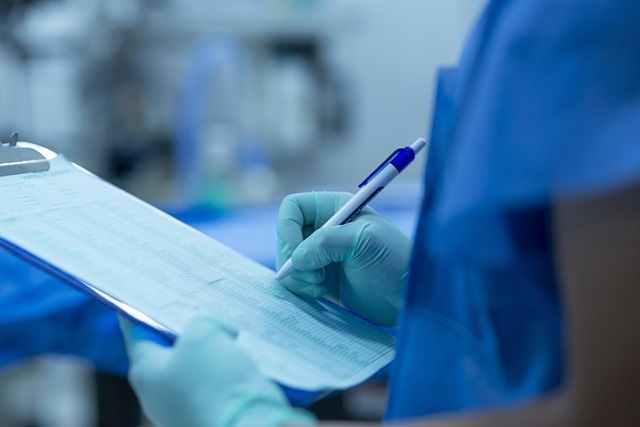Risks of Rhinoplasty: What You Need to Know Before Going Under the Knife
Risks of Rhinoplasty: What You Need to Know Before Going Under the Knife
Considering a nose job? You’re not alone. Rhinoplasty consistently ranks among the top five most requested cosmetic procedures in the United States. But here’s what many people don’t realize: understanding the risks of rhinoplasty isn’t just about preparing for worst-case scenarios—it’s about making an informed decision that aligns with your expectations and health profile.
The truth is, rhinoplasty carries inherent risks, just like any surgical procedure. While most patients achieve their desired results without serious complications, some experience side effects ranging from minor inconveniences to more significant concerns. What separates successful outcomes from problematic ones often comes down to three factors: surgeon selection, patient candidacy, and realistic expectations.
Let me break down what actually happens during the procedure, what could go wrong, and how to tilt the odds in your favor. Because when it comes to something as visible and functionally important as your nose, knowledge isn’t just power—it’s protection.
Quick Answer: What are the risks of rhinoplasty?
Rhinoplasty risks include infection (less than 2% of cases), bleeding, breathing difficulties, anesthesia complications, nerve damage causing numbness, unsatisfactory aesthetic results requiring revision (10-15% of cases), and long-term functional issues. Factors increasing risk include smoking, advanced age, underlying health conditions, and previous nasal surgeries. Most complications are manageable with proper surgeon selection and post-operative care.
Common Rhinoplasty Complications and Side Effects of Nose Surgery
Swelling and Bruising: Normal Rhinoplasty Recovery Side Effects
Most rhinoplasty procedures go smoothly, but that doesn’t mean they’re risk-free. During the first few weeks post-surgery, you’ll likely encounter some expected side effects that aren’t complications so much as normal parts of healing. Swelling tops that list—it’s unavoidable and can persist longer than many patients anticipate. Bruising around your eyes and nose area is another given, typically fading within two weeks.
Infection and Bleeding: Serious Rhinoplasty Complications
But where things get more complex is the distinction between normal healing responses and actual complications. Infection, for instance, occurs in less than 2% of cases but requires immediate attention when it does. Surgeons mitigate this risk through sterile techniques and sometimes prophylactic antibiotics, though antibiotic use varies by practice.
Bleeding presents another consideration. Minor nosebleeds during recovery are common and usually harmless. Significant bleeding that doesn’t stop with pressure, however, demands urgent evaluation. Some patients experience more bleeding than others, often related to individual healing responses or underlying medical conditions they might not have disclosed during consultation.
Breathing Difficulties and Functional Rhinoplasty Complications
Breathing difficulties frequently concern patients—and they should. While temporary nasal congestion is nearly universal after surgery, persistent obstruction suggests something else might be happening. The nasal passages can swell internally, or in rare cases, structural changes might affect airflow. Revision surgery sometimes becomes necessary when functional issues arise from aesthetic modifications.
Delayed Rhinoplasty Complications: When Problems Appear Later
That said, complications aren’t always immediate. Some issues surface months later, when swelling fully subsides and you can see—and breathe through—the final result. This delayed timeline catches many patients off guard because they assume if problems haven’t appeared within the first month, they’re in the clear.
Surgical Risks During Rhinoplasty: What Happens Under Anesthesia
Anesthesia Complications During Nose Surgery
What happens while you’re under anesthesia? That’s when surgical risks manifest, though experienced surgeons manage most of these effectively. Anesthesia complications represent one category—allergic reactions, adverse drug interactions, or breathing problems during sedation. These are rare but serious, which is why your surgeon will conduct thorough pre-operative screening and have an anesthesiologist monitoring you throughout.
Bleeding and Structural Damage Risks in Rhinoplasty
Bleeding during surgery requires immediate control. Surgeons use various techniques to minimize blood loss, but excessive bleeding can complicate the procedure and affect outcomes. This risk increases if you have bleeding disorders, take blood-thinning medications, or use certain supplements your surgeon might not know about—which is why full disclosure matters immensely.
Structural damage during rhinoplasty is another consideration, though skilled surgeons know how to avoid it. The septum—the cartilage dividing your nasal passages—can be damaged if techniques aren’t precise. Perforation of the septum creates a hole that can cause persistent nosebleeds, crusting, and whistling sounds during breathing. While repairable, it requires additional procedures that many patients aren’t anticipating.
Nerve Damage and Sensation Changes After Rhinoplasty
Nerve damage, while uncommon, can result in temporary or permanent numbness in areas of the nose or upper lip. Most numbness resolves within months as nerves regenerate, but some patients report lingering sensation changes years later. The nasal tip tends to be most affected, which some find distressing because it’s such a prominent and sensitive area.
Rhinoplasty Aesthetic Risks: Dealing with Unsatisfactory Results
Here’s where patient expectations collide with surgical reality. Not every rhinoplasty produces the exact nose a patient envisioned, even when technically successful. The nose might be straighter, smaller, or more refined—but perhaps not in the way you pictured during consultation. This gap between expectation and outcome creates psychological distress that some consider a genuine risk.
Functional problems often accompany aesthetic ones. Over-resection—removing too much cartilage or bone—can create a collapsed appearance or compromise breathing. Under-resection leaves patients feeling like they didn’t achieve meaningful change. Finding that balance is part art, part science, and entirely dependent on surgeon skill and experience.
Scarring represents another concern, though it’s usually minimal in closed rhinoplasty (where incisions are inside the nostrils). Open rhinoplasty, which involves an external incision across the columella—the strip of skin between nostrils—leaves a small scar. Most heal to be nearly invisible, but some patients develop more noticeable scarring, particularly if they have a tendency toward keloids or poor wound healing.
Asymmetry sometimes appears as swelling subsides, revealing that both sides of the nose didn’t heal identically. Minor asymmetry is actually normal—no nose is perfectly symmetrical—but significant differences might require revision. The challenge is determining what constitutes “normal” variation versus a surgical issue.
Long-Term Rhinoplasty Risks: Revision Surgery and Future Considerations
Short-term recovery is one thing, but what about years later? Rhinoplasty results aren’t necessarily permanent in the sense that your nose continues aging and changing after surgery. The cartilage and bone structures surgeons modify will still respond to trauma, aging, and environmental factors. Some patients find their noses continue changing shape subtly over decades.
Revision surgery becomes necessary in about 10-15% of cases, according to various studies. This statistic reflects both functional problems and aesthetic dissatisfaction. But here’s the catch: revision rhinoplasty is often more complex than initial procedures because surgeons must work with altered anatomy and existing scar tissue. Success rates for revisions are generally lower, and some patients undergo multiple revisions seeking their ideal outcome.
There’s also the question of how rhinoplasty interacts with future procedures. If you might want facial surgery or treatments down the line—whether reconstructive after injury or additional cosmetic work—your altered nasal structure affects what’s possible. This isn’t necessarily a problem, but it’s worth considering if you’re young and might want future modifications.
Insurance coverage represents another long-term consideration many patients overlook. While rhinoplasty performed for medical reasons—like correcting breathing obstruction from a deviated septum—is often covered, purely cosmetic procedures aren’t. If complications arise requiring additional surgery, those procedures might also fall under cosmetic categories depending on your insurance and the nature of the problem.
Factors That Increase Rhinoplasty Risk: Who’s at Higher Risk for Complications
Age and Health Status Impact on Nose Surgery Risks
Not everyone faces identical risks. Certain factors elevate your likelihood of complications, and recognizing these helps you make smarter decisions. Age matters—patients over 40 often heal slower and might experience more complications, though this varies widely by individual health status.
Smoking and Rhinoplasty Complication Rates
Smoking significantly increases risks. It constricts blood vessels, impairs healing, raises infection likelihood, and can lead to poor scar formation. Many surgeons refuse to operate on active smokers or require them to quit for several weeks before and after surgery. This isn’t arbitrary; it’s based on clear evidence that smoking dramatically compromises outcomes.
Underlying Health Conditions That Increase Rhinoplasty Risks
Underlying health conditions create additional considerations. Autoimmune disorders, diabetes, bleeding disorders, and certain medications all influence how your body responds to surgery and healing. The key is thorough disclosure during consultation—withholding information about health conditions or medications puts you at genuine risk.
Previous Nasal Surgeries and Revision Rhinoplasty Risks
Previous nasal surgeries or injuries complicate matters because surgeons work with altered anatomy. Structural integrity might already be compromised, cartilage quality could be diminished, and scar tissue from prior procedures makes dissection more challenging. These aren’t necessarily contraindications, but they elevate surgical difficulty and risk.
Minimizing Rhinoplasty Risks: What You Can Control to Reduce Complications
Choosing the Right Surgeon to Lower Nose Surgery Risks
Fortunately, you’re not powerless here. Several factors directly within your control significantly reduce your likelihood of complications. Surgeon selection probably matters most—choosing a board-certified plastic surgeon or facial plastic surgeon with extensive rhinoplasty experience isn’t just about results; it’s about safety.
Board certification ensures your surgeon has completed rigorous training and passed comprehensive exams. But beyond that, look for someone who performs rhinoplasty regularly, not occasionally. Ask about their revision rate, complication rate, and approach to handling problems when they arise. A surgeon’s willingness to discuss complications openly often indicates confidence and transparency rather than cause for concern.
Setting Realistic Expectations to Avoid Rhinoplasty Disappointment
Realistic expectations form another crucial element. During consultation, a good surgeon will show you before-and-after photos that represent typical results, not just their best outcomes. They’ll explain what’s achievable for your specific anatomy and what limitations exist. If a surgeon promises perfection or seems dismissive of risks, consider that a red flag.
Pre-Operative Preparation to Minimize Rhinoplasty Complications
Pre-operative preparation also matters. Following your surgeon’s instructions about medications to avoid—like aspirin or certain supplements—reduces bleeding risks. Stopping smoking well in advance helps circulation and healing. Managing underlying health conditions optimally before surgery gives your body its best chance to recover smoothly.
Post-Operative Care and Rhinoplasty Recovery Protocols
Post-operative care, while sometimes tedious, directly influences outcomes. Following activity restrictions protects against bleeding and trauma to healing tissues. Keeping incisions clean prevents infection. Attending all follow-up appointments allows your surgeon to catch problems early when they’re easier to address.
When to Seek Medical Attention After Rhinoplasty: Warning Signs of Complications
Most rhinoplasty recovery follows predictable patterns, but certain symptoms demand immediate attention. Fever over 100.4°F suggests possible infection and warrants urgent evaluation. Similarly, excessive bleeding that doesn’t stop with direct pressure—we’re talking soaking through multiple gauze pads quickly—requires emergency care.
Signs of breathing problems beyond expected congestion need prompt assessment. If you feel like you can’t get enough air or experience chest pain, don’t wait. Difficulty breathing could indicate bleeding inside the nose, allergic reactions, or other serious complications.
Unusual pain that isn’t controlled by prescribed medications might signal problems like hematoma (blood collection) or infection. While some discomfort is normal, severe or worsening pain should prompt a call to your surgeon.
Changes in vision or severe headaches could indicate issues affecting surrounding structures. While rare, these symptoms require immediate evaluation to rule out serious complications.
Rhinoplasty Recovery Timeline: What to Expect After Nose Surgery
Understanding what’s normal during recovery helps distinguish expected healing from potential problems. The first 48 hours typically involve the most discomfort, swelling, and bruising. You’ll likely have packing or splints in your nose, and breathing will feel restricted. This is all expected.
Week one brings gradual improvement, though you’ll still look swollen and bruised. Most patients can return to desk work after a week, though strenuous activity remains off-limits. The splint usually comes off around day 7, revealing initial results—though these are deceptive because significant swelling remains.
By two weeks, bruising typically fades, and swelling decreases noticeably. You’ll start recognizing your new nose, though it won’t be final yet. Social activities become more comfortable, though you might still feel self-conscious about residual swelling.
Months two through six see gradual refinement as swelling continues subsiding. The nose becomes more defined, and breathing often improves as internal swelling decreases. This is when most patients feel good about results, though subtle changes continue.
Final results take 12-18 months to fully manifest, especially at the nasal tip where swelling resolves slowest. This extended timeline frustrates some patients who expect immediate final results, but it’s normal. The nose you see at six months isn’t necessarily the nose you’ll have at 18 months.
Making Your Rhinoplasty Decision: Weighing the Risks and Benefits
Weighing the risks of rhinoplasty against potential benefits requires honest self-reflection. Are you seeking surgery for yourself or to meet others’ expectations? Are your expectations realistic given your anatomy and what’s surgically possible? Do you understand that perfection is unlikely and revision might be necessary?
Consultation is your opportunity to gather information and assess fit with a surgeon. Come prepared with questions about their experience, complication rates, and approach to handling problems. Ask to see results from patients with similar nasal structures to yours. Request patient testimonials or speak with previous patients if possible.
Financial considerations matter too. Rhinoplasty typically costs $5,000 to $15,000 or more, depending on location, surgeon experience, and procedure complexity. This doesn’t include potential costs of revisions if needed. Ensure you’re comfortable with the investment and have plans for handling unexpected expenses if complications arise.
Consider timing as well. Are you in a position to take time off for recovery? Do you have support systems in place? Are you mentally prepared for the temporary appearance changes during healing? These practical considerations influence both your experience and outcomes.
The Bottom Line: Understanding Rhinoplasty Risks and Making Informed Decisions
Rhinoplasty isn’t trivial surgery, despite its cosmetic nature. The risks of rhinoplasty range from minor inconveniences to serious complications requiring additional procedures or leaving permanent changes. Most patients navigate surgery successfully, but understanding potential problems helps you prepare mentally, physically, and financially.
The key is approaching the decision with realistic expectations, choosing your surgeon carefully, and following pre- and post-operative instructions meticulously. When patients experience complications, it’s often because expectations were misaligned, surgeon selection wasn’t optimal, or recovery protocols weren’t followed closely enough.
Your nose plays crucial roles in breathing, appearance, and overall facial harmony. Modifying it surgically deserves careful consideration of both potential benefits and genuine risks. If you’re considering rhinoplasty, educate yourself thoroughly, consult with multiple qualified surgeons, and ensure you’re pursuing the procedure for the right reasons with realistic expectations.
Because the best outcomes happen when patients and surgeons work together toward achievable goals, with full awareness of what could go wrong and how to minimize those risks. That’s not pessimism—it’s preparation. And preparation often makes the difference between a procedure you’re satisfied with and one you wish you’d approached differently.













